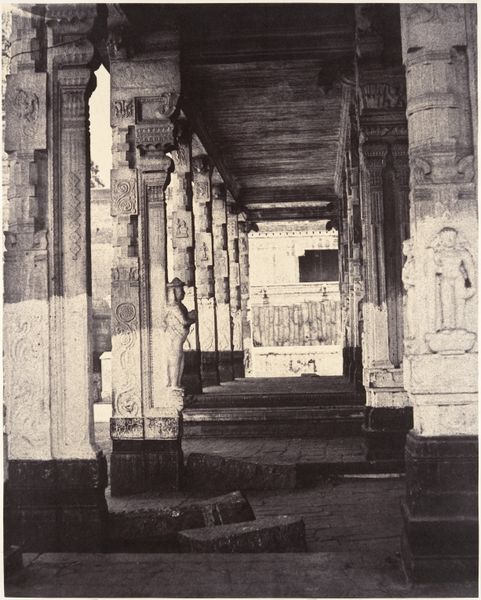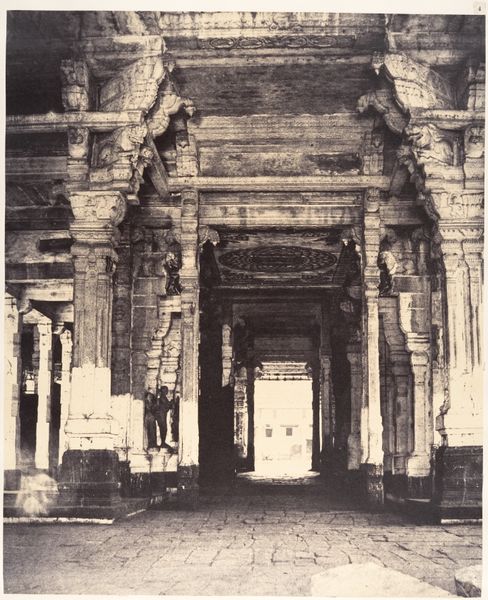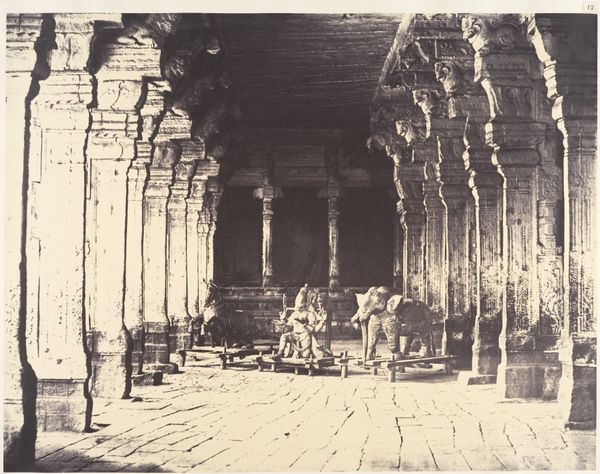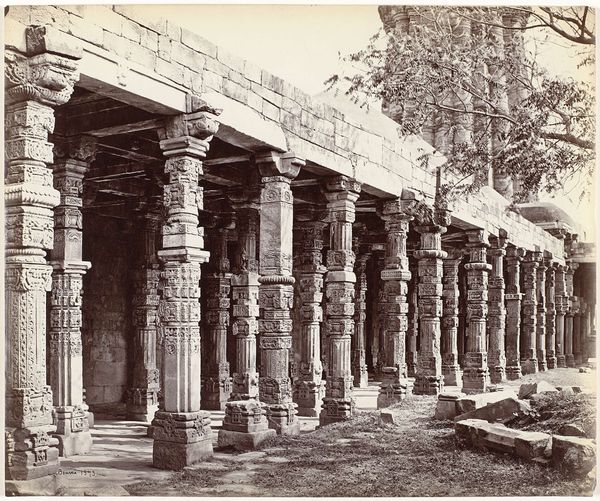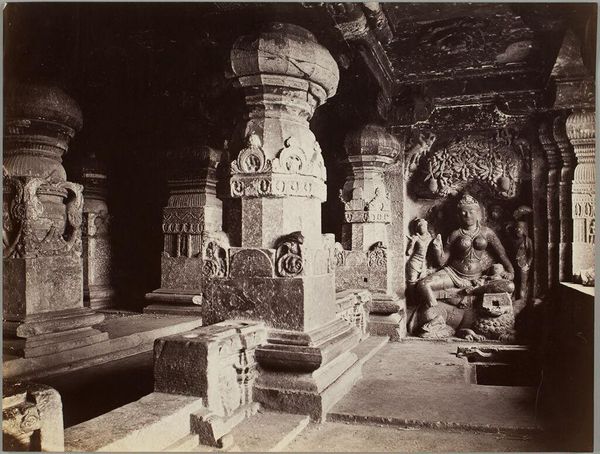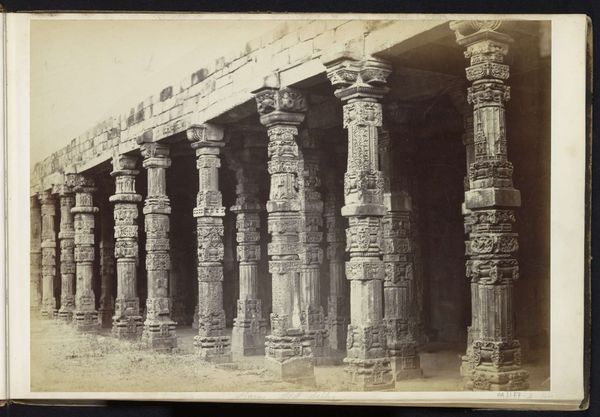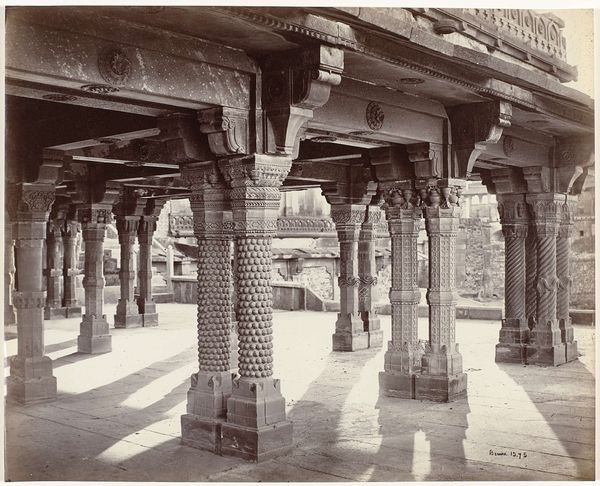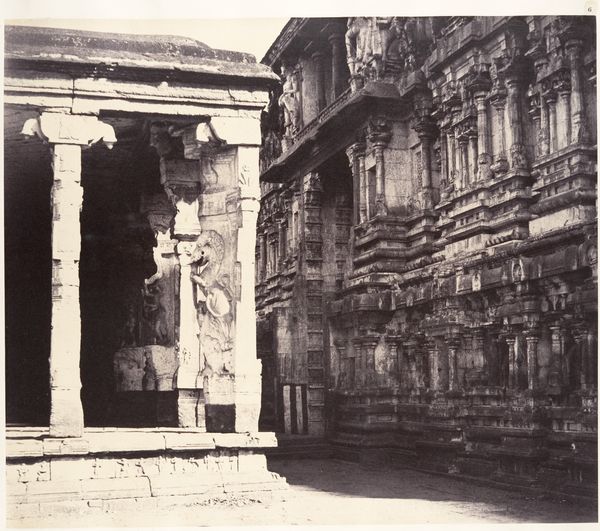
print, photography, architecture
sculpture
landscape
photography
geometric
ancient-mediterranean
islamic-art
architecture
realism
Dimensions: height 285 mm, width 374 mm
Copyright: Rijks Museum: Open Domain
Curator: Linnaeus Tripe captured this stunning image, "Zuilengang in de Viravasuntarayan Mundapam in Madurai, India," between 1858 and 1860. It’s an albumen print showcasing the colonnades of a temple. Editor: My first impression is the dramatic contrast. The photographer masterfully plays with light and shadow, guiding the eye down a seemingly endless corridor of pillars. Curator: Absolutely. Consider the colonial context: Tripe was commissioned by the British East India Company. Photography, then, became a tool for documentation, for asserting power through visual representation of colonized spaces and people. The very act of photographing this sacred space is laden with implications about cultural dominance. Editor: Indeed. If we set aside, for a moment, that gaze and think just about what Tripe accomplished visually, it's worth noting the textures and the repetition. Look closely at the detailed carvings on each column and how their geometric forms are thrown into sharp relief by the sunlight. There’s a kind of rhythm established through their reiteration that pulls you into the depth of the image. Curator: Yes, and that rhythm echoes a deeper historical narrative. The temple represents not just architectural beauty but also centuries of religious and cultural tradition. How did the local population view these photographic incursions? What was the power dynamic at play when this image was created? Those questions are vital. Editor: It’s a dialectic, isn’t it? Between form and function, aesthetics and socio-politics. One could argue that Tripe’s exacting focus—his concern with composition and light—belies his engagement with empire. The image isn't just documentary; it also possesses artistic merit in its own right. The tonality achieves an incredible balance of shadow and light. Curator: I appreciate that perspective, and it’s undeniable that the photographic skill is significant. But let’s remember that aesthetics, too, are not apolitical. They can serve specific ideologies and agendas, even if subtly. Editor: Point taken. The longer I look, the more I appreciate how it captures a moment in time, holding both cultural reverence and imperial observation, forever bound together. Curator: Ultimately, Tripe's photograph compels us to examine not only the beauty of the Viravasuntarayan Mundapam but also the complex historical forces that shaped its representation and our understanding.
Comments
No comments
Be the first to comment and join the conversation on the ultimate creative platform.



